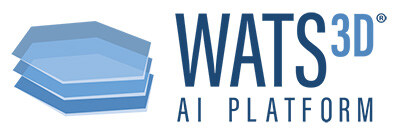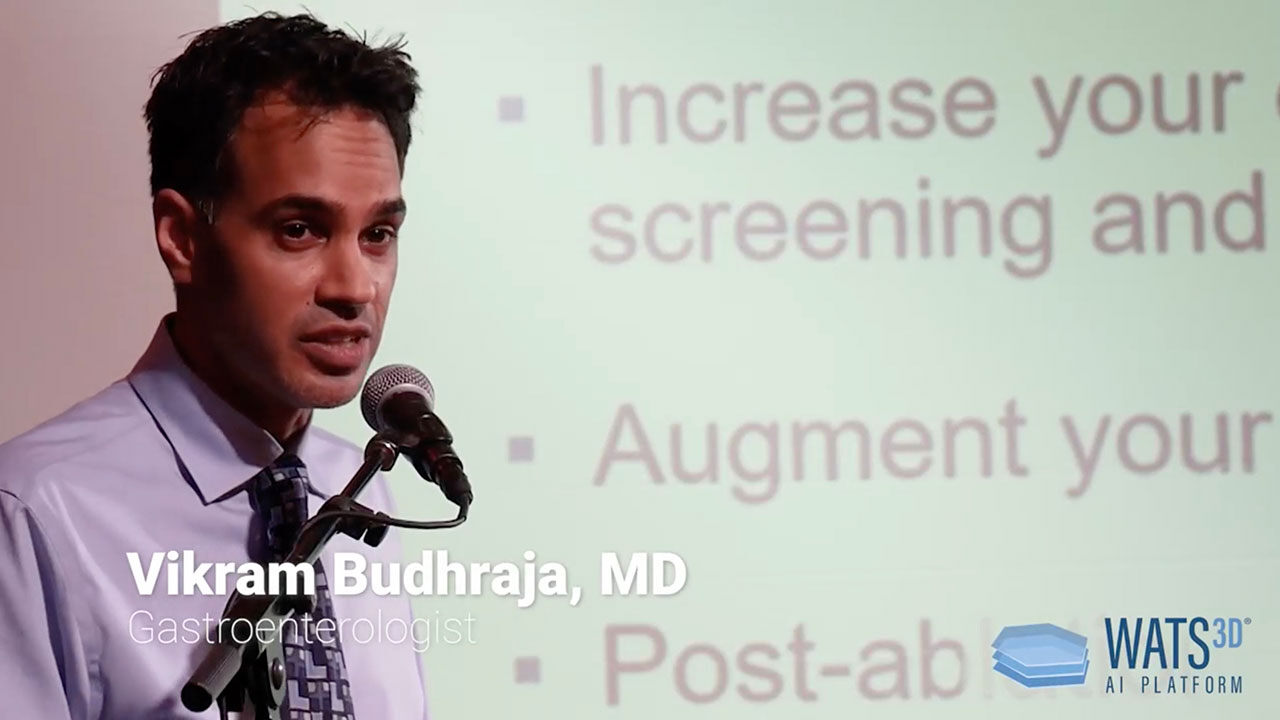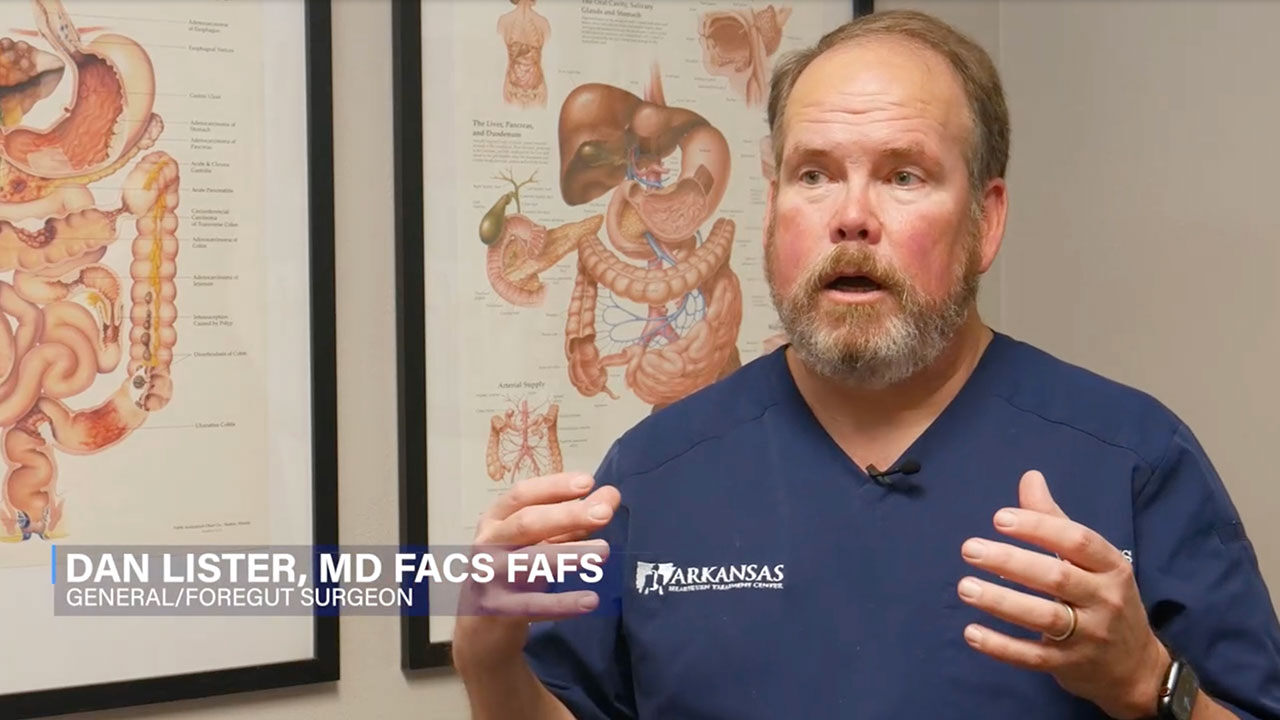Reduce Your
EGD Uncertainty
AI-Powered Analysis Enables You To Confidently Find More BE & Dysplasia
WATS3D utilizes a powerful combination of enhanced wide area sampling, 3D imaging with AI neural network analysis and expert GI pathologists - resulting in more precise diagnoses.
See How WATS3D Works

Why You Should Consider Adding WATS3D To Your EGDs
Alarming Esophageal Cancer Stats

EAC incidence rise is almost unchanged in the United States, resulting in a 700+% increase over the past 40 years. Esophageal cancer continues to be one of the deadliest (~80% 5-year mortality rate).
Limitations of Current Standard

Seattle protocol lacks utility and confidence, being time-consuming with low physician adherence. Random sampling covers only a fraction of the esophagus, leaving ~94% uncovered, prone to sampling error.
- Subtle appearance of dysplasia in BE mucosa makes dysplasia challenging to identify.
- Only 5-10% of the entire BE mucosa is sampled.
- Decrease in dysplasia detection due to poor adherance to surveillance guidelines.
- High interobserver variability due to challenges in histologic diagnosis of dysplasia.
.
Effective Common Sense Diagnostic Solution

3-tiered approach with enhanced wide-area tissue acquisition and AI analysis overcomes sampling error, reduces pathological misses, and empowers WATS3D GI pathologists to render a more precise diagnosis.
ASGE Practice Guideline:
“In this document, the ASGE offers evidence-based clinical practice guidelines on topics regarding screening and surveillance for BE.” “In patients with known or suspected BE, we suggest using WATS3D in addition to WLE with Seattle protocol biopsy sampling compared with WLE with Seattle protocol biopsy sampling alone.”
“Wide-area trans-epithelial sampling with three-dimensional computer-assisted analysis (WATS 3D , CDx Diagnostics) is a safe and effective adjunct to forcep biopsies in the evaluation of Barrett’s esophagus, LGD, and HGD." SAGES TAVAC
“The American Foregut Society (AFS) Board has concluded that there are sufficient data to support the routine use of WATS3D technology in the diagnosis and ongoing evaluation of Barrett’s esophagus.”
- Demonstrated clinical utility, effective for screening, surveillance and post-ablation - regardless of segment length.
- Evidence-based - 20+ published studies
Experience the WATS3D Advantage
Learn how easy it is to reduce your EGD uncertainty and find more BE and dysplasia.
WATS3D Streamlined Process
- Guideline-included for screening & surveillance of Barrett's
- Improved time efficiency: Takes just 2-3 minutes
- Simple practice integration
- Access tests results in 5 days or less
- Test kit provided at no cost to your practice
- Shipping is included (both ways)
Make your patient's next EGD more reliable
Insights from WATS3D Users
WATCH DR. LISTER'S NEXT VIDEO >
EVIDENCE-BASED CARE
Substantial, Growing Body of Clinical Data
WATS3D has consistently demonstrated reliable detection of more Barrett's esophagus and dysplasia than standard biopsy methods alone.
ACCESS THE SUMMARY OF PUBLICATIONS
How WATS3D Reduces EGD Uncertainty
AI-Powered Analysis Empowers You To
Confidently Find More BE & Dysplasia
WATS3D utilizes a powerful combination of enhanced wide area sampling, 3D imaging with AI neural network analysis and expert GI pathologists - resulting in more precise diagnoses.
[Watch the "How WATS3D Works" Video ]
Connect with Us
Still have questions about WATS3D? Our team is here to ensure a smooth and informative experience. Feel free to reach out with any inquiries or feedback, or give us a call at 866-3636-CDx (239).
Recent Published WATS3D Studies
Increased Barrett's and Dysplasia Detection
Wide-area transepithelial sampling with computer-assisted 3-dimensional analysis (WATS) markedly improves detection of esophageal dysplasia and Barrett's esophagus: analysis from a prospective multicenter community-based study.
Michael S. Smith, Erkanda Ikonomi, Rajiv Bhuta, Natalya Iorio, Rahul D. Kataria, Vivek Kaul, Seth A. Gross; US Collaborative WATS3D Study Group
Diseases of the Esophagus, March 2019
- Prospective study at 21 community-based sites
- 12,899 patients enrolled, about 81% were screened for BE
- Order of WATS3D and FB was alternated but had no impact on the results
- Overall detection: BE and dysplasia by 153% and 242%, respectively
- Screening: BE and dysplasia increase of 213% and 274%, respectively
- Surveillance: BE and dysplasia increase of 73% and 216%, respectively
Increases Diagnostic Yield Effective Post-Ablation
Utility of wide-area transepithelial sampling with 3-dimensional computer-assisted analysis as an adjunct to forceps biopsy sampling in the surveillance of patients with Barrett’s esophagus after endoscopic eradication therapy.
F. Scott Corbett, Robert D. Odze, Matthew J. McKinley
iGIE, December 2022
Adjunctive study at 121 community-based sites
- 1,114 BE patients enrolled
- All patients were undergoing or had completed endoscopic eradication therapy, with sampling of the suspected BE segment as per the Seattle protocol and GI societal guidelines
- The adjunctive yield of WATS3D for detection of residual/recurrent BE and dysplasia were overall 52.5% and 91.5%, respectively.
- In patients who had no visual evidence of BE, the highest adjunctive yield for detection of intestinal metaplasia was 260%
- WATS3D is effective at increasing the diagnostic yield of intestinal metaplasia post ablation, when used alongside FB
Finds More - Regardless of Segment Length
Benefit of Adjunctive Wide Area Transepithelial Sampling with 3-Dimensional Computer- Assisted Analysis Plus Forceps Biopsy Based on Barrett’s Esophagus Segment Length.
Arvind J. Trindade, Robert D. Odze, Michael S. Smith, Vivek Kaul
Gastrointestinal Endoscopy, March 2023
- Academic and community-based, adjunctive study
- 8,471 patients enrolled: 52% for screening, 48% for surveillance
- All patients underwent both FB and WATS3D, the order was determined by the endoscopist
- Overall adjunctive and absolute increased yield of WATS3D were 47.6% and 17.5% respectively for intestinal metaplasia, and 139% and 2.4% respectively for detection of dysplasia
- The adjunctive yield for short segments and long segments were 127.9% and 144.6% respectively
- Regardless of segment length,




